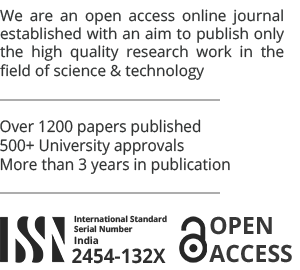Research Paper
Analysis of geogrid reinforced pond ash embankment using finite element method
Published by: Syed Khalid Zahoor, Rajat Sharma
Full Details
Research Paper
Analysis of variation of hardness in TIG welded stainless steel alloy
Published by: Ankush Thakur, Vikram Thakur
Full Details
Review Paper
Review on MIG welded stainless steel alloy
Published by: Nitesh Kumar, Vikram Thakur
Full Details
Research Paper
Analysis of variation of hardness in MIG welded stainless steel alloy
Published by: Nitesh Kumar, Vikram Thakur
Full Details
Research Paper
Review on TIG welded stainless steel alloy
Published by: Ankush Thakur, Vikram Thakur
Full Details
Review Paper
A short review on recent technologies of food packaging
Published by: Sesha Reddy Alla
Full Details
